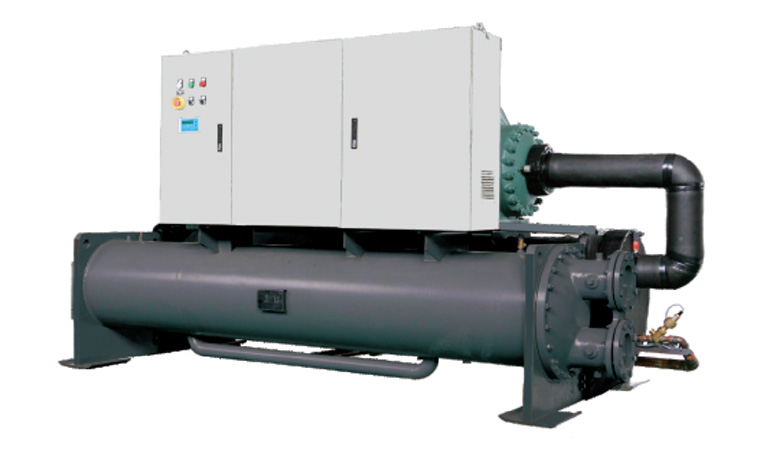Which chiller type is best for the data center: air-cooled or water-cooled? There is no single answer, and HVAC system designers need to ask many questions before advocating one type of chiller over another. The obvious equipment choice is sometimes overruled by unique project factors, including available square footage, backup power strategies, local regulations limiting the power and water use, or the owner’s sustainability priorities.
Ideally, the data center will consult with an HVAC company on the front end of the design process to ensure that the solution meets both short and long-term goals. If you are the one making the decision on behalf of the data center, it helps to understand the advantages and disadvantages inherent in each type of chiller.
Capacity: Packaged air-cooled chillers are typically available in sizes from 7.5 to 500 tons [25 to 1,580 kW]. Packaged water-cooled chillers are typically available in capacities from 10 to 4,000 tons [35 to 14,000 kW]. In other words, water-cooled chillers can provide higher cooling capacity with fewer units and a smaller footprint.
Maintenance: Air-cooled chillers do not require cooling towers. Water-cooled chillers require cooling towers, which have strict maintenance requirements: water treatment, chiller condenser tube cleaning, tower mechanical maintenance and freeze protection. Systems with open cooling towers must have a water treatment program to prevent contaminants such as bacteria and algae. Cooling towers also evaporate water, so you will need access to plenty of supplemental water to replace the evaporated water.
Location: The quest for cheap power and low taxes is changing the face of the data center industry by placing huge facilities in remote areas far from users. Air-cooled chillers can be easier to operate if placed in locations where temperatures are below freezing, as they eliminate the problems associated with operating cooling towers in harsh winter conditions. Cooling towers may require special control sequences, basin heaters, or even indoor catch basins to operate safely in cold weather.

Delivery and installation: Most air-cooled chillers are “packaged systems”. The system includes the condenser, compressor and evaporator and is designed and configured at the factory for optimum performance and reliability, reducing design and delivery time and simplifying installation. Water-cooled chillers add complexity to condenser water piping, pumps, cooling towers and controls.
Longevity: As technology continues to advance and more data processing grows, data center infrastructure needs to be able to support these advances while providing consistent performance. In general, air-cooled chillers have a life expectancy of 15 to 20 years, while water-cooled chillers have a life expectancy of 20 to 30 years.
This is due in part to the fact that water-cooled chillers are typically installed indoors and operate at lower condenser fluid pressures, while air-cooled chillers operate at higher condenser pressures when operated outdoors.
Water savings: Water availability, cost, treatment requirements, and potential additional construction complexity all play a role in system selection. Because air-cooled chillers do not require water, they are often preferred, especially where water is scarce or very expensive.
In summary, the advantages of air-cooled chillers include lower maintenance costs, pre-packaged systems that are easier to design and install, and better freezing temperature performance. Advantages of water-cooled chillers include higher energy efficiency, greater capacity, and longer equipment life. However, the best choice for a project can also depend on a completely different set of decision criteria. It is important for data center and system designers to consider all factors to ensure that they end up with a specified chiller that balances all objectives over the long term.
